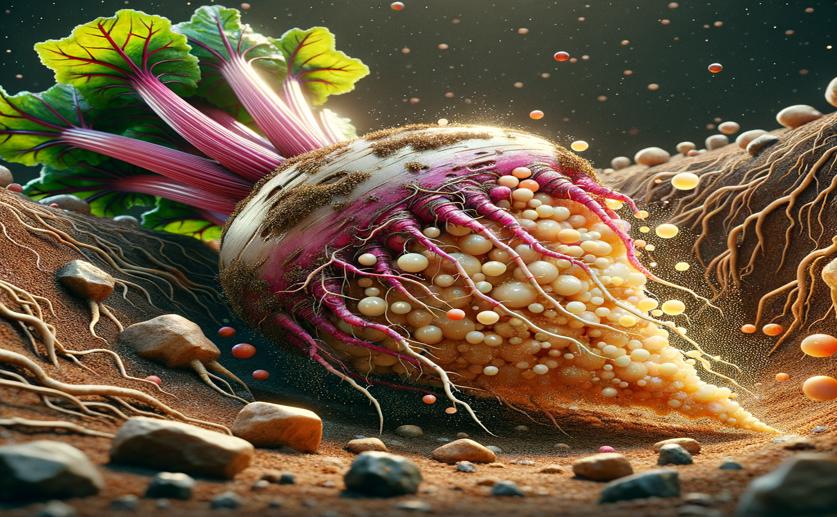
How Sugar Beet Roots Import Sugar and Glucose Efficiently
Jim Crocker
12th April, 2024

Image Source: Natural Science News, 2024
Key Findings
- Study at Julius-Maximilians-Universität Würzburg identifies key sugar transporters in sugar beets
- STP13 is a high-affinity transporter, sensitive to sugar levels and can move both glucose and sucrose
- STP13's flexibility and cold tolerance may help improve sugar beet cultivation and efficiency
References
Main Study
1) Sugar beet PMT5a and STP13 carriers suitable for proton-driven plasma membrane sucrose and glucose import in taproots.
Published 11th April, 2024
https://doi.org/10.1111/tpj.16740
Related Studies
2) Surcose transport in isolated plasma-membrane vesicles from sugar beet (Beta vulgaris L.) Evidence for an electrogenic sucrose-proton symport.
3) Proton-Coupled Sucrose Transport in Plasmalemma Vesicles Isolated from Sugar Beet (Beta vulgaris L. cv Great Western) Leaves.
Journal: Plant physiology, Issue: Vol 89, Issue 4, Apr 1989
4) Source-Sink Regulation Is Mediated by Interaction of an FT Homolog with a SWEET Protein in Potato.
5) Sucrose Transporter ZmSut1 Expression and Localization Uncover New Insights into Sucrose Phloem Loading.
Journal: Plant physiology, Issue: Vol 172, Issue 3, Nov 2016



 7th April, 2024 | Greg Howard
7th April, 2024 | Greg Howard